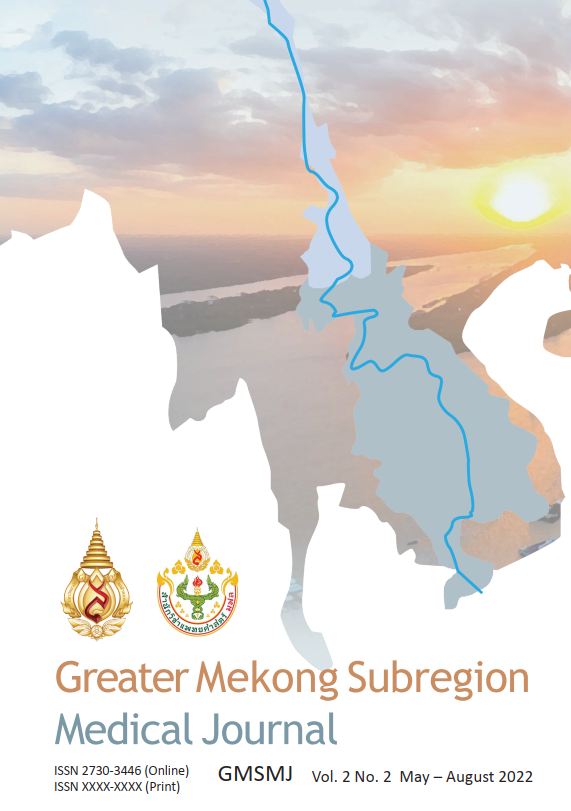Fort Pichaidaphak Hospital (FPCDH) COVID-19 System: The COVID-19 Screening and Monitoring Tools for Patients and Active Case Finding
Keywords:
COVID-19, Home isolation, Community isolation, Screening, ReportAbstract
Background: The situation of the epidemic of COVID-19 from December 2019 until the present, the violence affected the service of the secondary care unit. The insufficient medical personnel caused the heavy workload. As a result, many service recipients have to wait more than a day for access to COVID-19 screening tests. Fort Pichaidaphak Hospital is a secondary care unit has performed screening duties for the SARS-CoV-2 since the risk screening process, specimen collection, laboratory analysis, reporting the results of the examination and repeating follow-up appointments in high-risk groups undergoing quarantine.
Objective: The researchers aimed to evaluate the efficacy of The FPCDH COVID-19 system, compared with conventional system using disease investigation form (Novelcorona2) and also the satisfaction of the medical personnel and the patients who are undergoing quarantine.
Methods: The FPCDH COVID-19 system was established by the Pathology Department in two platforms: a web application platform and a Line official account platform that is connected to the system of the Department of Disease Control, Ministry of Public Health and the National Health Security Office (NHSO) to reduce the turnaround time for both reactive and proactive COVID-19 screening services and reporting laboratory results. Moreover, it was used to monitor abnormal symptoms of those who were undergoing quarantine and assessed the medical personnel and patients’ satisfaction.
Results: Conventional system using disease investigation form (Novelcorona2) took longer periods of time then putting the screening personnel at risk of contacting the patient’s illness for an average of 2 minutes 52 seconds per patient. The examination reporting procedure was duplicated and delayed, taking an average of 7 minutes 56 seconds per sample, while proactive FPCDH COVID-19 system took 78 minutes per 100 patients. In addition, repeating follow-up appointments in high-risk contacts who had been quarantined was able to be followed up only 58.97% by using the conventional method. Thereby increasing the community infection rate compared to the FPCDH COVID-19 system which was able to increase the percentage of repeat follow-up appointments in high-risk contact group to 88.93%. FPCDH COVID-19 system was able to reduce the time in the reporting process by using an average time of 34 seconds per 1 sample and reduce the time for proactive COVID-19 screening by using an average duration of 31 minutes per 100 patients. Satisfaction rate in using the FPCDH COVID-19 system was more than 85.00%.
Conclusion: FPCDH COVID-19 system is highly efficacious screening and monitoring tools for COVID-19 patients.
References
World Health Organization. Sharing COVID-19 experience: The Thailand response [online]. 2019, https://www.who.int/thailand/emergencies/novelcoronavirus-2019 [16 Sep 2020]
Governor’s Office of Mae Hong Son Province. Vigilant Measures Against the Spread of Coronavirus 2019 (2019- nCoV) [online].2019’https://www.covid.uttaradit.go.th/ [1 Apr 2020]
Downloads
Published
How to Cite
Issue
Section
License
Copyright (c) 2022 Greater Mekong Sub-region Medical Journal

This work is licensed under a Creative Commons Attribution-NonCommercial 4.0 International License.






